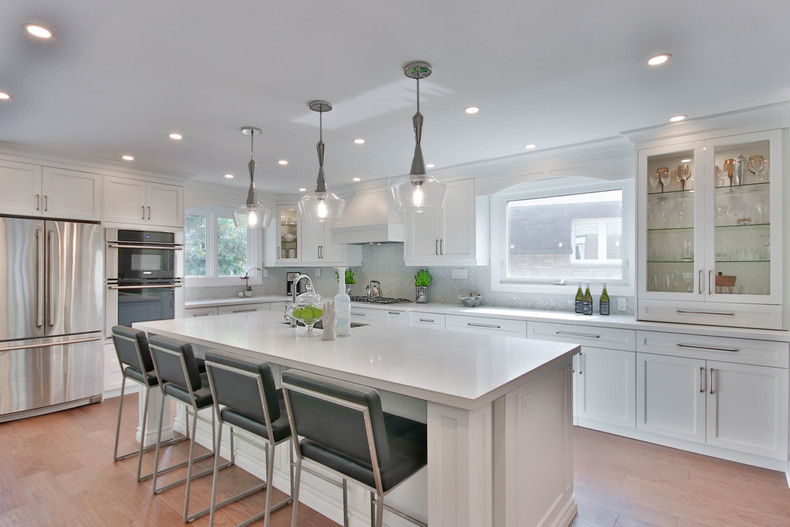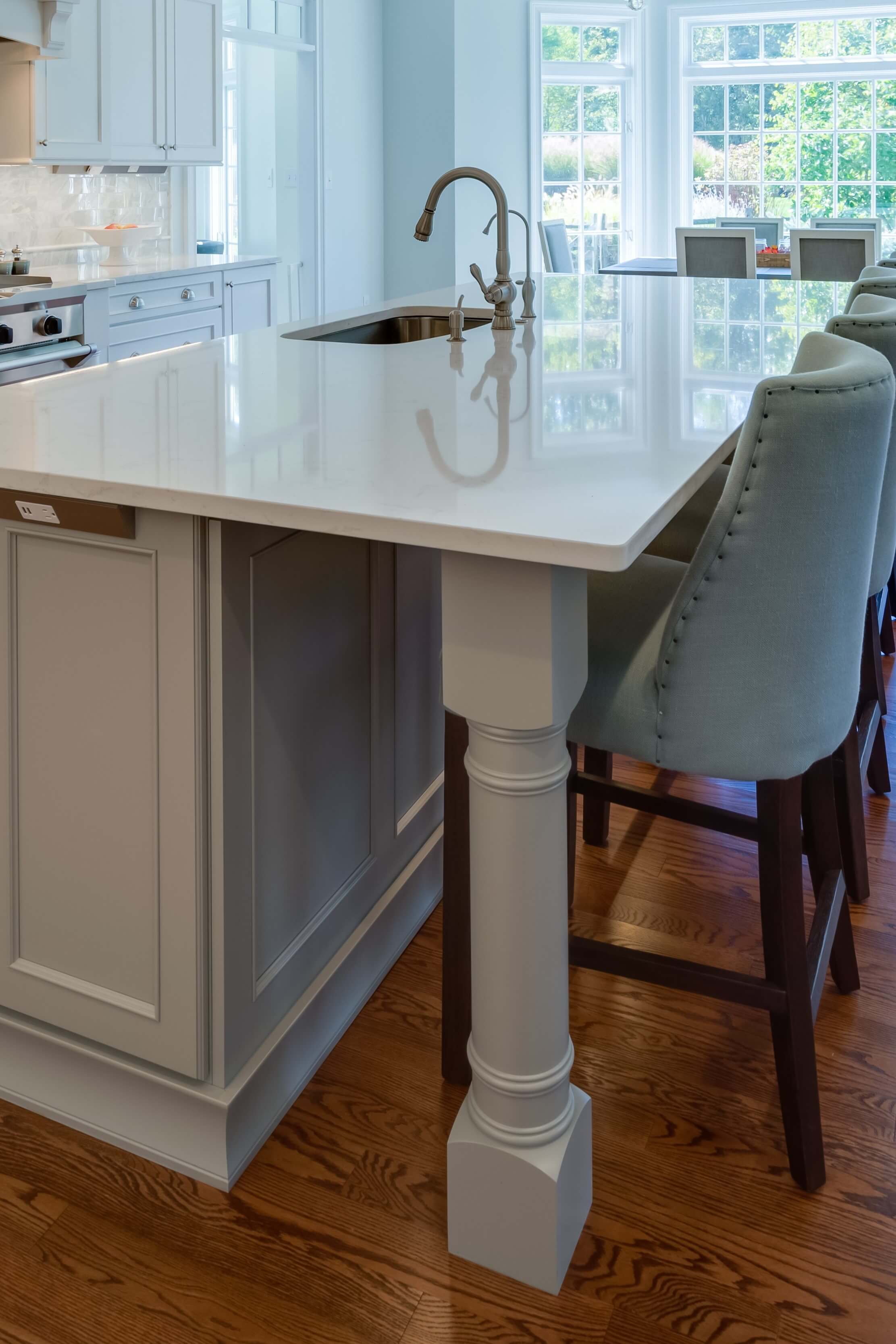Personalize Your Kitchen Look with One-of-a-kind Legs For Kitchen Island Choices
Personalize Your Kitchen Look with One-of-a-kind Legs For Kitchen Island Choices
Blog Article
Essential Variables to Take Into Consideration When Picking Legs For Cooking Area Island
Picking the proper legs for a kitchen island includes a careful evaluation of numerous elements that can significantly influence both capability and aesthetic allure. As we explore these aspects, it comes to be clear that each decision can have far-ranging implications for the general cooking area experience.
Material Options
When choosing legs for a cooking area island, understanding the different product options is necessary for attaining both aesthetic charm and architectural integrity (Legs For Kitchen Island). The choice of product dramatically influences not only the toughness of the island but also its general layout and capability
Wood is a prominent option, supplying warmth and flexibility. Solid woods, such as oak or maple, give strength and can be stained or painted to match the kitchen area decoration. Steel legs, usually made from stainless steel or wrought iron, contribute a modern-day and commercial feeling while ensuring resilience and stability. These materials are resistant to use and can support considerable weight, making them optimal for bigger islands.
One more choice is engineered materials, like MDF or plywood, which can be more cost-effective while still supplying a series of coatings. They might not give the very same level of stability as solid wood or steel. Legs For Kitchen Island. Last but not least, materials such as acrylic or glass can produce a modern appearance, though they may call for additional support to ensure stability.
Eventually, the selection of product for kitchen area island legs should straighten with the preferred functionality and the total motif of the kitchen area.
Style and Style

When thinking about style, the shape and surface of the legs are important. Conical legs can give a feeling of agility and style, while thicker, more durable legs can share toughness and security. In addition, the coating-- be it repainted, tarnished, or all-natural-- must match the cabinets and counter top materials to create a unified look.
Moreover, the layout of the legs can additionally mirror individual taste. Customized or decorative legs, such as those featuring detailed makings or special geometric forms, can function as focal points, adding personality and character to the kitchen area. Ultimately, the right selection will certainly not only enhance capability yet likewise elevate the visual charm, making the kitchen island a standout attribute of the home.
Elevation Considerations
Choosing the ideal height for kitchen island legs is critical, as it straight influences both performance and comfort. The conventional elevation for a kitchen island commonly ranges from Full Report 36 to 42 inches, straightening with typical kitchen counter heights. A 36-inch elevation is optimal for food prep work and food preparation, enabling for comfortable use of kitchen area home appliances and tools. On the other hand, an elevation of 42 inches is typically chosen for islands meant for bar seating, fitting taller feceses and using a casual dining experience.

It is also necessary to account for customers' elevations and preferences. Customizing the elevation can make sure a comfortable experience for all member of the family, making the kitchen island an extra functional and satisfying area.
Weight Assistance
Making sure sufficient weight assistance for kitchen area island legs is essential for both safety and security and performance. The cooking area island typically serves several purposes, consisting of food preparation, eating, and additional storage space, necessitating a durable support structure. When selecting legs, it is vital to consider the general weight capacity needed based upon the island's meant usage and the materials that will be positioned on it.
The option of material for the legs plays a substantial role in their weight-bearing abilities. Strong wood, metal, and durable compounds generally give superior stamina contrasted to lighter materials. Furthermore, the layout of the legs-- whether they are right, tapered, or have a pedestal form-- can affect their capacity to distribute weight successfully throughout the framework.
Furthermore, the leg positioning need to be strategically prepared to enhance stability. Legs placed at the edges or with a wider base can better support much heavier lots. Constantly speak with the maker's requirements pertaining to load limits to make sure that the legs can maintain the desired weight without endangering safety and security. In summary, selecting kitchen island legs with sufficient weight support is vital for developing a functional and safe culinary space.
Installation and Upkeep
Correct installment and maintenance of kitchen area island legs are vital for making certain long life and stability. This frequently includes securing the legs to the island base making use of proper fasteners, ensuring that the legs are degree and aligned.
When installed, routine upkeep is required to maintain the stability and resource appearance of the legs - Legs For Kitchen Island. For wooden legs, periodic cleaning with a wet cloth and application of ideal wood polish can protect against moisture damages and preserve their coating. Metal legs might require a gentle cleansing solution to eliminate oil and grime, complied with by a completely dry cloth to stop rust formation
Furthermore, evaluate the legs routinely for indications of wear or damages, such as fractures or loosened joints. Tightening screws or bolts as required can also prolong the lifespan of the legs. By adhering to these setup and maintenance methods, house owners can make certain that their cooking area island remains sturdy and visually appealing for years to come.
Conclusion

Aesthetic coherence is critical in selecting the style and layout of legs for a cooking area island, as these components considerably affect the overall ambiance of the room. Conical legs can supply a sense of lightness and elegance, while thicker, more durable legs can communicate stamina and stability.Picking the proper height for kitchen island legs is crucial, as it straight influences both capability and convenience. In this article recap, picking cooking area island legs with ample weight assistance is essential for creating a safe and functional cooking room.
In verdict, picking legs for a cooking area island demands cautious factor to consider of different elements, including material options, design, elevation, weight assistance, and setup.
Report this page